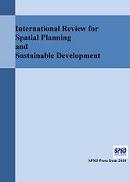Volume 6, Issue 4
Displaying 1-12 of 12 articles from this issue
- |<
- <
- 1
- >
- >|
Main Section: Urban-Rural Regeneration and Cultural Sustainability
-
2018Volume 6Issue 4 Pages 1-4
Published: October 15, 2018
Released on J-STAGE: October 15, 2018
Download PDF (82K) -
2018Volume 6Issue 4 Pages 5-20
Published: October 15, 2018
Released on J-STAGE: October 15, 2018
Download PDF (460K) -
2018Volume 6Issue 4 Pages 21-34
Published: October 15, 2018
Released on J-STAGE: October 15, 2018
Download PDF (589K) -
2018Volume 6Issue 4 Pages 35-50
Published: October 15, 2018
Released on J-STAGE: October 15, 2018
Download PDF (282K) -
2018Volume 6Issue 4 Pages 51-61
Published: October 15, 2018
Released on J-STAGE: October 15, 2018
Download PDF (367K) -
2018Volume 6Issue 4 Pages 62-75
Published: October 15, 2018
Released on J-STAGE: October 15, 2018
Download PDF (536K) -
2018Volume 6Issue 4 Pages 76-92
Published: October 15, 2018
Released on J-STAGE: October 15, 2018
Download PDF (1398K)
Section A: Planning Strategies and Design Concepts
-
2018Volume 6Issue 4 Pages 93-109
Published: October 15, 2018
Released on J-STAGE: October 15, 2018
Download PDF (989K) -
2018Volume 6Issue 4 Pages 110-127
Published: October 15, 2018
Released on J-STAGE: October 15, 2018
Download PDF (1345K) -
2018Volume 6Issue 4 Pages 128-147
Published: October 15, 2018
Released on J-STAGE: October 15, 2018
Download PDF (644K) -
2018Volume 6Issue 4 Pages 148-164
Published: October 15, 2018
Released on J-STAGE: October 15, 2018
Download PDF (1463K) -
2018Volume 6Issue 4 Pages 165-179
Published: October 15, 2018
Released on J-STAGE: October 15, 2018
Download PDF (679K)
- |<
- <
- 1
- >
- >|
